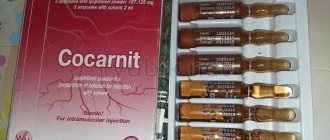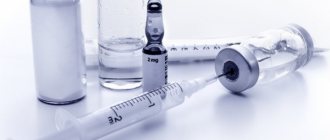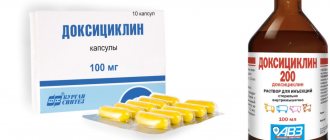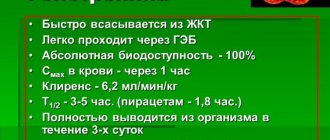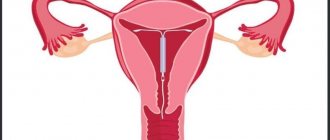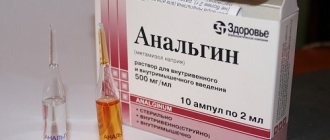Pharmacodynamics and pharmacokinetics
ATP-Long is a drug in a new category of substances that has a molecule containing ATP , and magnesium salts , as well as histidine amino acids . The drug exhibits a specific, unique pharmacological effect that is not typical for its other chemical ingredients.
It has a stimulating effect on energy metabolism , helps normalize the level of saturation with magnesium and potassium , activates ion transport systems of cell membranes, reduces uric acid , and develops the protective antioxidant function of the myocardium.
In patients with paroxysmal supraventricular and supraventricular tachycardia , flutter and atrial fibrillation, the use of the drug helps restore natural sinus rhythm , as well as reduce the intensity of ectopic foci (ventricular and atrial extrasystoles ).
During hypoxia and ischemia, ATP-Long has antiarrhythmic, membrane-stabilizing and anti-ischemic activity, due to its ability to establish metabolic processes in the myocardium . It has a beneficial effect on coronary circulation , peripheral and central hemodynamics , increases the contractility of the heart muscle, improves cardiac output and left ventricular functionality.
This range of effects has a positive effect on physical performance, and also leads to a decrease in the number of attacks of shortness of breath and angina pectoris during physical work, which is what ATP-Long is used for.
Pharmacological properties:
Pharmacodynamics. ATP-LONG is an original drug of a new class of substances - multi-ligand coordination compounds with high-energy phosphates, the molecule of which consists of adenosine-5'-triphosphate (ATP), the amino acid histidine and magnesium and potassium salts. Thanks to its original structure, the molecule has a pharmacological effect unique to it, which is not inherent in any of its chemical components (ATP, histidine, K+, Mg++). ATP-LONG stimulates energy metabolism, the activity of ion transport systems of cell membranes, normalizes the concentration of potassium and magnesium ions, indicators of the lipid composition of membranes, the activity of membrane-dependent enzymes, improves the antioxidant system of myocardial protection, and reduces the concentration of uric acid. ATP-LONG has an anti-ischemic, membrane-stabilizing, anti-arrhythmic effect due to the normalization of metabolic processes in the myocardium during ischemia and hypoxia. ATP-LONG improves central and peripheral hemodynamics, coronary circulation, increases myocardial contractility, functional state of the left ventricle and cardiac output, which leads to increased physical performance. Under conditions of ischemia, the drug reduces myocardial oxygen consumption, improves coronary circulation, and activates the functional state of the heart, which leads to a reduction in the frequency of angina attacks and shortness of breath during exercise. The drug restores normal sinus rhythm in patients with paroxysmal supraventricular and supraventricular tachycardia, with atrial fibrillation and flutter, and also reduces the activity of ectopic foci (atrial and ventricular extrasystoles). ATP-LONG normalizes the concentration of potassium and magnesium ions in tissues.
Pharmacokinetics. Not studied.
Indications for use
The drug ATP-Long is indicated for use in complex treatment for:
- unstable angina;
- coronary heart disease;
- angina pectoris of exertion and rest;
- heart failure;
- myocardial and post-infarction cardiosclerosis ;
- supraventricular tachycardia ;
- heart rhythm disturbances;
- supraventricular paroxysmal tachycardia;
- vegetative-vascular dystonia;
- myocarditis of infectious-allergic nature;
- myocardial dystrophy;
- hyperuricemia of various origins;
- chronic fatigue syndrome ;
- surgical interventions in the pre- and postoperative periods;
- coronary syndromes , especially with nitrate intolerance, in order to enhance antiarrhythmic effectiveness and reduce the side effects of antiarrhythmic drugs.
Side effects
- feeling of discomfort in the chest and epigastric region;
- itchy skin;
- nausea;
- rashes on the skin;
- decreased blood pressure;
- bronchospasm;
- hyperemia ;
- tachycardia;
- headache;
- increased diuresis;
- feeling of heat;
- dizziness;
- increased gastrointestinal motility;
- Quincke's edema;
- hypermagnesemia or hyperkalemia (in case of uncontrolled and prolonged use).
Instructions for use of ATF-Long
ATP-Long tablets, instructions for use
ATP-Long tablets are recommended to be taken sublingually (under the tongue) until completely absorbed. Reception is carried out regardless of food 3-4 times in 24 hours, in a single dose of 10-40 mg. The average period of taking the tablets is 20-30 days (further use is on the recommendation of a doctor). It is possible to repeat the course of treatment after 10-15 days. It is not recommended to exceed the maximum daily dose of 160 mg.
ATP-Long injection solution, instructions for use
ATP-Long injection solution is administered 1-2 times every 24 hours, intramuscularly, 1-2 ml, at a rate of 0.2-0.5 mg/kg.
Intravenous administration is carried out in the form of infusions (slowly) in a dose of 1-5 ml, at a rate of 0.05-0.1 mg/kg/min. Infusions are carried out in a hospital setting and under blood pressure control. The average duration of therapy is 10-14 days.
Vitamins for the heart ATF injections
Diseases of the heart and peripheral vessels, as well as pathologies of the retina, can be successfully treated with ATP (adenosine triphosphate) drugs. Most often, for the treatment of the heart, it is practiced to prescribe courses of ATP intramuscularly in combination with vitamins for the most stable and long-lasting effect of treatment.
Composition and pharmacological action
The described drug is produced in the consistency of a solution for parenteral administration. It is a transparent, colorless liquid with an acceptable light yellow tint. The composition is contained in 1 ml ampoules, which are packaged in cardboard boxes of 10 pieces.
The injection drug contains an active compound - sodium adenosine triphosphate (triphosadadenine) in a volume of 10 mg.
Auxiliary component: water for injection.
The active substance is a high-energy compound, which during the reaction is capable of accumulating and transferring energy. ATP synthesis occurs during the oxidation of glucose. In the body, the generated energy is used to ensure synthetic cellular processes, stimulate muscle contractions, and transmit nerve impulses at a number of synapses.
The drug optimizes metabolic processes, eliminates arrhythmia of atrial and ventricular origin (through inhibition of the automatism of the sinus node), expands the vascular walls of the heart and brain tissue, and has a mild hypotensive effect.
After entering the body, the active substance immediately begins to take part in metabolic processes, so information on the elimination of drug residues and its metabolites is limited.
Indications and contraindications for use
The prerogative when prescribing ATP is pathologies of the cardiovascular system, including acute conditions, as well as diseases in which there is an imbalance of energy metabolism at the cellular level. For the use of ATP, indications are determined only by physicians.
In therapeutic practice, the drug is prescribed for the following pathologies:
- dystrophic changes in skeletal muscles;
- atonic phenomena in smooth muscle tissue;
- degenerative pathologies of the retina;
- attacks of arrhythmia and tachycardia;
- diseases of peripheral arteries and veins, including endarteritis, Raynaud's disease;
- inactive progress of labor.
There are such pathophysiological conditions when the use of the drug is strictly contraindicated, namely:
- acute allergic reactions to the components of the drug in an individual or family history;
- period of acute myocardial infarction;
- severe hypotension, up to complete collapse;
- slowing heart rate;
- pronounced manifestations of atrioventricular blockade of degrees II-III;
- failure of the heart in the presence of edema and ascites;
- obstructive pulmonary diseases - asthma, recurrent bronchitis, bronchiectasis;
- high levels of free potassium and magnesium in the blood;
- recovery after a cerebral stroke with hemorrhage into the tissues or ventricles;
- conditions requiring emergency care, especially the stage of cardiogenic shock;
- therapy with shock dosages of cardiac glycosides.
Instructions for the use of ATP injections
Classically prescribed by injection. Is it possible to administer it intramuscularly to treat the heart and other pathologies, or is it better to stick only to intravenous jet/drip administration by healthcare workers? It depends on the indications - there are no restrictions in this regard in the manufacturer's instructions.
Method of administration
The ATP solution in ampoules is administered parenterally: mainly by intramuscular injection, in case of severe condition of the patient - intravenously and exclusively by medical staff.
Dosage regimen and overdose
The attending physician, taking into account the main diagnosis, concomitant diseases and the fact of taking other drugs, selects an individual dose, duration of prescribed treatment and methods of monitoring the patient’s condition.
According to clinical protocols, it is recommended to use standard dosages in the treatment of a number of diseases in adult patients:
- diseases of arteries, veins and capillaries in the periphery, muscular dystrophy - the drug ATP is injected intramuscularly with 1 ml of solution once for 2 days, and then the dose is increased to 1 ml in the morning and evening. The course lasts 30-40 days. It is recommended to repeat therapy quarterly;
- genetically determined retinal pigmentary degeneration is treated with intramuscular injection of 5 ml of the drug in the morning and evening for 2 weeks. The recommended frequency of courses is at least 2 times a year;
- relieving an attack of supraventricular tachycardia requires the introduction of ATP under ECG control quickly intravenously to 2 ml of solution over 5-10 seconds, and a repeat is possible after 2-3 minutes.
An overdose of the drug can manifest itself with symptoms such as confusion and fainting, symptoms of severe hypotension, and arrhythmic heartbeat.
Providing assistance in case of overdose occurs as follows:
- if the substance was injected in a stream, then its administration is stopped without delay, and the short half-life will lead to a rapid improvement in the condition;
- symptoms can be relieved with antagonists as prescribed by a doctor.
Side effects
The administration of an ATP solution can lead to the undesirable development of a number of side effects that will affect various patient systems:
- from the cardiovascular system - discomfort in the heart area, rapid or slow pulse, drop in blood pressure, other arrhythmic manifestations;
- from the nervous system - pain in the temples, crown or throughout the head, including paroxysmal headaches, causeless episodic dizziness, the formation of anxiety and fear, fainting;
- from the digestive organs - a metallic taste in the mouth, spasmodic contractions of the intestines during jet or drip intravenous administration;
- from the lungs and bronchi – bronchospasm and intense shortness of breath;
- from the kidneys – increased urine output;
- from the musculoskeletal system – pain in the large skeletal muscles of the neck, arms, back;
- from the skin – redness of the cheeks, forehead, chin;
- from the sensory organs – blurriness of objects.
There are different types of side effects:
- manifestations of an allergic nature - skin itching, minor rash, urticaria, as well as serious reactions such as angioedema and anaphylactic shock;
- general reactions - a sharp increase in body temperature, a feeling of heat or chills;
- local reactions - discomfort and hyperemia of the skin, swelling at the injection site.
special instructions
Treatment should be carried out taking into account drugs of other groups prescribed to the patient, as well as under the control of clinical and laboratory studies - ECG and biochemical analysis.
Therapy requires restrictions on the use of caffeine-containing medications, drinks and food.
Interaction
The combination of ATP and high doses of cardiac glycosides leads to sudden manifestations of atrial or ventricular arrhythmia.
Particular attention is required in the treatment of patients during the recovery period after myocardial infarction and with manifestations of severe cardiac decompensation.
Concurrent use with magnesium compounds causes an unwanted excess of magnesium ions in the blood.
The use of potassium medications and some diuretics together with ATP injections significantly increases the level of potassium in the blood.
Consumption of caffeine and medications or foods containing it will reduce the effect of ATP therapy.
The course of treatment may provoke seizures in patients prone to seizures.
Impact on the ability to drive vehicles and complex mechanisms
During a course of drug administration, attentiveness and concentration while driving various types of transport or technologically complex devices have not been studied, but the performance of these actions during drug therapy should be correlated with the general condition of the patient.
Use during pregnancy and lactation
During pregnancy and breastfeeding, the drug can be prescribed only for health reasons.
Use in childhood
In pediatrics, the medicine has restrictions and can only be prescribed to children under 18 years of age by specialists.
Terms of sale and storage
The medication is sold exclusively in pharmacy chains upon presentation of a prescription form certified by the attending physician.
Stored in a refrigerator while maintaining a temperature from +2 to +7 o C.
The storage place intended for the drug should be inaccessible to children.
Source: https://vitamingid.ru/articles/vitaminy-dlya-serdtsa-ukoly-atf/
Interaction
Parallel use of cardiac glycosides increases the possibility of AV blockade .
Co-administration of magnesium can lead to hypermagnesemia .
Combination with Dipyridamole enhances the effect of ATP-Long, and with Aminophylline , Caffeine , Xanthinol Nicotinate , Theophylline , on the contrary, reduces its effectiveness.
ACE inhibitors , potassium and potassium-sparing diuretics increase the risk of hyperkalemia .
ATP-Long can enhance the antianginal effectiveness of calcium channel blockers , beta-blockers and nitrates .
Interaction with other drugs
ATP-long should not be prescribed simultaneously with cardiac glycosides due to the increased risk of atrioventricular block. When taking the drug simultaneously with ACE inhibitors, potassium medications and potassium-sparing diuretics, the risk of hyperkalemia increases. When taking the medicine simultaneously with magnesium medications (for example, Magnerot), the risk of hypermagnesemia increases. Caffeine, aminophylline, xanthinol nicotinate reduce the effectiveness of the drug ATP-long, and dipyridamole increases the therapeutic effectiveness of the drug. The drug enhances the antianginal effect of nitrates and b-adrenergic receptor blockers.
special instructions
Both tablets and injections of the drug should be used with caution in conjunction with cardiac glycosides and in case of arterial hypotension and, due to the risk of AV blockade , as well as in diabetes mellitus , the patient’s predisposition to bronchospasm , fructose, sucrose-isomaltose, glucose tolerance disorders -galactose (for tablets).
Long-term use should be combined with monitoring plasma levels of magnesium and potassium .
During therapy, the consumption of caffeine-containing products should be limited.
Reviews for ATF-Long
As a rule, reviews of ATP-Long are neutral and most likely this is due to the frequent use of this drug in combination with other drugs, the effects of which often overlap to such an extent that it becomes difficult to determine which drug has a positive effect on the body.
The same situation occurs with side effects and undesirable consequences.
If you have been prescribed this medication, you should rely on the doctor’s opinion and strictly follow his recommendations and instructions.
What is this?
Chemistry will help you understand what ATP is. The chemical formula of the ATP molecule is C10H16N5O13P3. Remembering the full name is easy if you break it down into its component parts. Adenosine triphosphate or adenosine triphosphoric acid is a nucleotide consisting of three parts:
- adenine – purine nitrogenous base;
- ribose – a monosaccharide related to pentoses;
- three phosphoric acid residues.
Rice. 1. The structure of the ATP molecule.
A more detailed explanation of ATP is presented in the table.
| Components | Formula | Description |
| Adenine | C5H5N5 | A derivative of purine, it is part of vital nucleotides. Insoluble in water |
| Ribose | C5H10O5 | Five-carbon sugar found in nucleotides, including RNA |
| Phosphoric acid | H3PO4 | Inorganic acid, readily soluble in water |
ATP was first discovered by Harvard biochemists Subbarao, Lohman, and Fiske in 1929. In 1941, German biochemist Fritz Lipmann discovered that ATP is the source of energy for a living organism.

